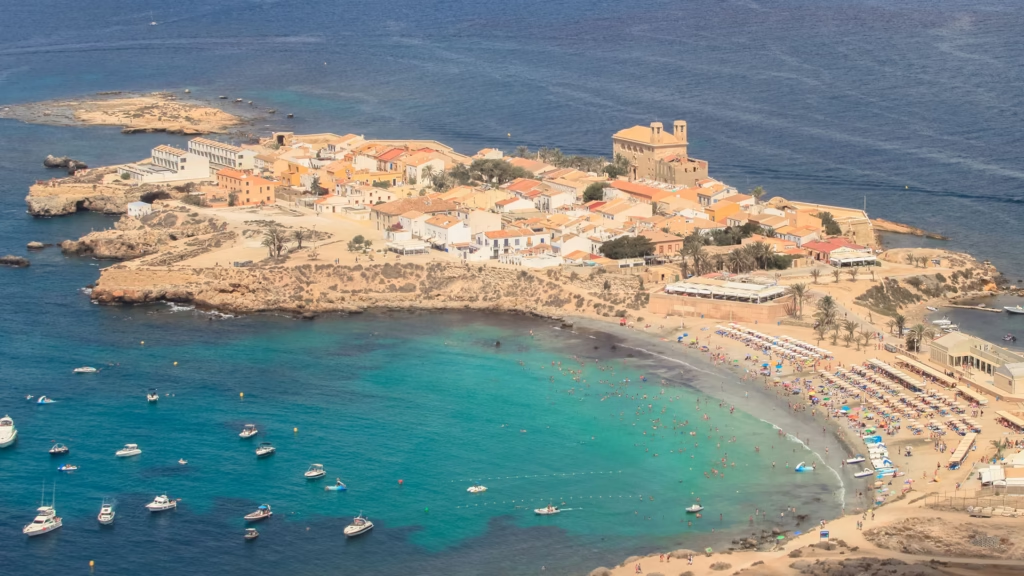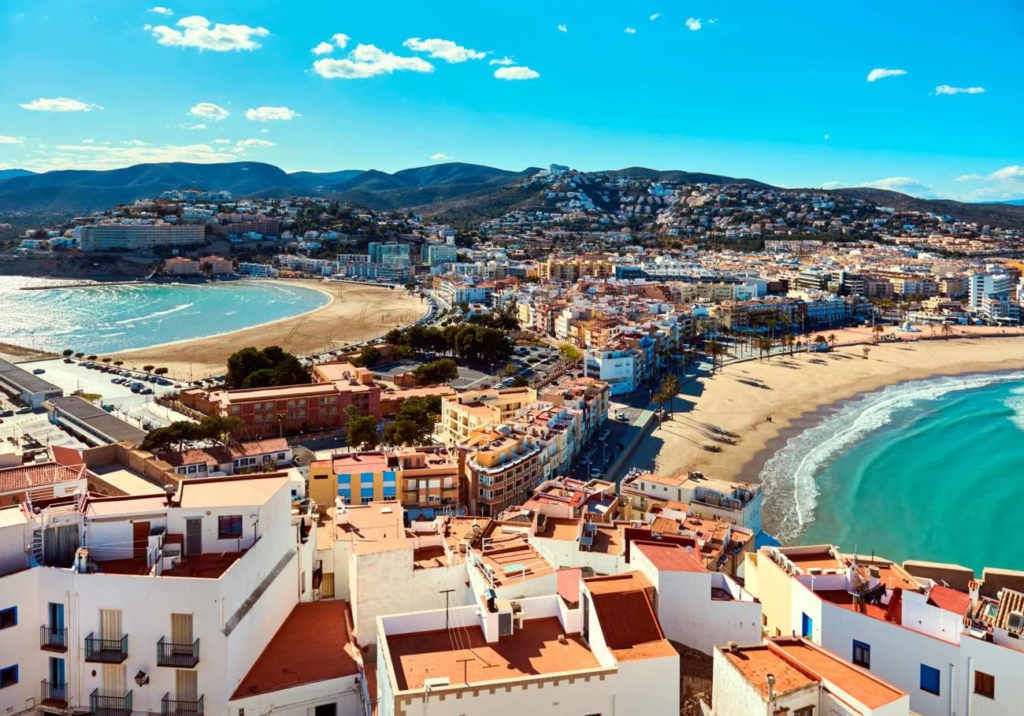Tabarca is a small, enchanting island situated off the coast of Alicante in Spain. Its crystal-clear waters, fascinating history, and welcoming atmosphere make it a must-visit destination. Whether you plan a day trip or wish to spend a night on this secluded retreat, Tabarca promises memorable experiences. From historic fortifications to vibrant marine life, this island is a hidden gem that invites you to immerse yourself in the beauty of the Mediterranean Sea. Keep reading to learn why Tabarca is such a delightful spot and how to make the most of your journey.

A Brief History of Tabarca
The Island’s Origin and Evolution
Tabarca, also known as “Isla de Tabarca,” was once a haven for pirates. In the 18th century, King Carlos III ordered the fortification of the island. This decision helped transform Tabarca into a defensive stronghold. The strategic importance of its location also meant that the island housed soldiers and laborers who fortified its perimeter. Today, you can still see remnants of these walls. They remind visitors of a time when maritime threats were a constant concern.
The island was also populated with Genoese families rescued from the Tunisian island of Tabarka. These settlers gave the place its present name. Over time, fishing replaced defense as the main source of income. Nowadays, tourism has become the primary economic engine. This shift highlights Tabarca’s appeal as a unique destination that blends historical intrigue with picturesque surroundings.
A Cultural Melting Pot
Tabarca’s heritage reflects a blend of Spanish, Genoese, and North African influences. This combination is particularly visible in the island’s gastronomy and local customs. Stroll through the narrow streets, and you may catch a glimpse of traditional celebrations. Cultural events often take place during the warmer months. They showcase folk dances, local music, and time-honored religious processions that offer a window into Tabarca’s soul.
Top Attractions on Tabarca Island
Historic Walls and Defensive Gates
One of Tabarca’s highlights is the set of defensive walls that encircle much of the old town. These fortifications date back to the 18th century. They were intended to repel pirate raids and protect the local population. The walls remain in good condition, offering an evocative glimpse into the past. You can explore three main gates: San Rafael, San Gabriel, and San Miguel. Each gate leads to charming spots inside the walled enclave, showcasing historical architecture and panoramic sea views.
The Church of St. Peter and St. Paul
In the heart of the old town stands the Church of St. Peter and St. Paul. Built in a baroque style, this church is an architectural highlight. Its interior boasts ornate details and centuries-old religious art. Step inside to appreciate the reverent atmosphere and the blend of artistry and devotion that defines Tabarca’s spiritual heritage.
Tabarca Lighthouse and Watchtower
A short stroll from the main village area brings you to the iconic lighthouse. Constructed in the mid-19th century, it served as a guiding beacon for ships sailing along the Mediterranean coast. The lighthouse’s sturdy design reflects its essential role in maritime navigation. Nearby stands an 18th-century watchtower used to detect approaching vessels. Though not always open to the public, both landmarks contribute to the island’s historic charm and make for striking photographs.
Governor’s House and Museum
For a deeper look into Tabarca’s past, visit the Governor’s House. This structure was once the home of the island’s governor. Today, it hosts a small museum featuring exhibits on local history, culture, and maritime heritage. Here, you’ll find artifacts that detail the island’s evolution from a defensive outpost to a modern tourist destination.
Outdoor Activities and Water Sports
Snorkeling and Scuba Diving in the Marine Reserve
Tabarca is home to Spain’s first designated marine reserve, created in 1986. The protected waters around the island teem with fish, seagrass meadows, and colorful marine life. If you love snorkeling or scuba diving, you’ll find these pristine underwater habitats absolutely captivating. The island’s transparent, turquoise waters offer excellent visibility. You can expect to spot groupers, octopuses, and even sea bream gliding among the rocks.
Kayaking and Paddleboarding
For an active adventure, consider renting a kayak or paddleboard. Paddling around the island allows you to soak in the scenic coastline at your own pace. Since Tabarca is fairly small, you can complete a loop around it if you’re an experienced kayaker. Along the way, you’ll catch stunning views of hidden coves and secret inlets. Some spots are only accessible by water, making them perfect for a peaceful break away from the more popular beaches.
Relaxing on the Beach
If you prefer a slower pace, Tabarca’s main beach is the place to be. It sits near the pier where most ferries arrive. The water is shallow and calm, perfect for swimming or simply floating. Bring a beach towel, some sunscreen, and a good book. You’ll be ready to enjoy a laid-back afternoon in this tranquil setting. Listen to the sound of gentle waves while you soak up the sun.
Relish Local Gastronomy
Fresh Seafood Dishes
Seafood plays a starring role in Tabarca’s culinary tradition. Fishermen still bring in fresh catches every day. As a result, local restaurants pride themselves on serving the best fish and shellfish. Don’t miss the chance to sample “caldero tabarquino.” This signature rice dish features fish broth, saffron, and local spices. It’s a comfort food staple you won’t soon forget.
Paella and Other Mediterranean Flavors
While paella is famously associated with the Valencia region, Tabarca also claims its share of this iconic dish. Many eateries offer variations such as mixed paella (with meat and seafood) and vegetarian paella (with seasonal vegetables). Pair your meal with a crisp white wine for a true Mediterranean experience. You’ll find fresh salads topped with olives and tomatoes, as well as desserts inspired by local traditions.
Best Time to Visit Tabarca
Enjoying Mild Mediterranean Weather
Tabarca enjoys a pleasant climate typical of the Mediterranean region. Summers are warm, with temperatures often reaching 30°C (86°F). Winters are mild, dipping to around 10°C (50°F). Spring and autumn offer moderate weather and fewer crowds, making these seasons ideal if you want a quieter experience. Whenever you visit, you’ll likely enjoy ample sunshine and gentle sea breezes.
Peak Season vs. Off-Season
The island sees its highest influx of tourists from June to September. Ferries run frequently during these months, and restaurants are fully open. However, this popularity can lead to crowded beaches and longer waiting times at restaurants. If you prefer a more laid-back vibe, consider traveling in May or October. During these months, you’ll still have pleasant weather, but with fewer visitors.
How to Get There
Ferry Rides from Alicante and Santa Pola
Most travelers reach Tabarca by ferry from Alicante or Santa Pola. Boats depart multiple times a day, especially in summer. The journey from Alicante takes roughly one hour, while Santa Pola is just a 30-minute ride away. Ticket prices vary, but they typically range between 10€ and 20€ for a round trip. Check schedules in advance. Ferries may reduce frequency during the low season.
Excursion Boats and Organized Tours
If you prefer an all-inclusive experience, consider an organized day trip. Many tour providers offer round-trip boat rides plus guided tours of Tabarca’s historical sites. Some packages also include meals in local restaurants. This option suits travelers who like the convenience of having everything arranged in one place. Group tours can be an excellent way to meet fellow travelers and learn interesting facts from a knowledgeable guide.
Accommodation and Practical Tips
Staying Overnight
Although most visitors opt for day trips, Tabarca offers limited overnight accommodation. Small guesthouses, hostels, and private apartments are your primary choices. Reserving well in advance is crucial, especially during peak season. Staying overnight lets you experience the island’s quieter side once day visitors depart. You’ll have the chance to witness breathtaking sunsets and sunrises over the Mediterranean Sea.
Currency, Budget, and Services
Tabarca uses the Euro, like mainland Spain. Most restaurants and shops accept credit cards, but it’s wise to carry some cash for small purchases. Prices can be slightly higher on the island than on the mainland, reflecting the cost of delivering goods. Basic medical services are available, although critical care requires traveling back to the mainland. Bring any necessary medications and essentials to ensure a stress-free stay.
Responsible Travel Tips
Tabarca is a protected area, so responsible tourism is essential. Observe posted signs, and do not disturb marine life when snorkeling or diving. Avoid littering or damaging the underwater flora. Stick to marked paths to preserve local vegetation. By following these guidelines, you help keep the island pristine for future generations.
Frequently Asked Questions (FAQ)
1. How long does it take to explore Tabarca?
You can see the main attractions in a day. Stroll through the old town, enjoy the beach, and sample local cuisine. However, an overnight stay lets you experience the island’s serene evenings and beautiful sunrise.
2. Is Tabarca suitable for families with young children?
Yes. The island’s beaches are calm and shallow. Children can safely play near the shoreline. Ferry rides are fairly short from Santa Pola, making the journey manageable for small kids.
3. Do I need a special permit to scuba dive in the marine reserve?
Recreational divers typically need to check with local dive centers about permits. Many dive operators in Santa Pola and Alicante handle the permit process for you. Always follow guidelines to protect the marine environment.
4. Can I bring my own food and drinks to Tabarca?
Absolutely. Many visitors bring picnic lunches to enjoy on the beach. Just remember to pick up all trash afterward. Help keep the island free of litter.
5. Are there any ATMs on the island?
There is often one ATM available near the port. However, it can run out of cash during peak season. Bring enough cash, or pay by card where possible.
6. Is it possible to visit Tabarca in winter?
Yes, you can visit in winter. Ferry frequency is reduced, but you’ll enjoy a tranquil atmosphere. Many restaurants may have limited hours, so plan ahead.
7. Can I rent snorkeling gear on the island?
Some shops provide rental gear during the busy season. Availability is more limited in the off-season, so consider bringing your own if you plan to snorkel extensively.
Final Thoughts on Tabarca
Tabarca is more than just an island off the coast of Alicante. It’s a charming piece of Spain’s cultural mosaic, showcasing centuries of history and a vibrant marine reserve. Wander through ancient city walls, savor fresh seafood, and snorkel in the Mediterranean’s clear waters. This small but captivating island offers an escape from everyday life, letting you embrace nature and heritage in equal measure.
When you plan your visit, remember to respect the local environment and follow the guidelines for preserving the marine reserve. Discover hidden coves and wander the cobblestone streets as you imagine life in a bygone era. Whether you spend a few hours or stay overnight, Tabarca will leave you with lasting memories of Spain’s sunlit coast. It’s time to explore this hidden island paradise and create a travel story worth sharing.

